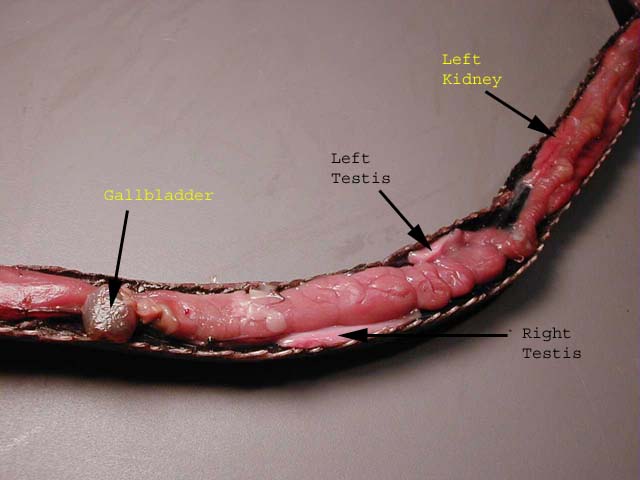
Reproductive System of the Copperhead Snake
The reproductive system of the copperhead is very similar in structure and function to the various other classes, with the exception of the hemipenes, which is analogous to the phallus in the Canvasback Duck and the penis in other taxa. The testes are usually adjacent to each other, and the right one is located more anteriorly in snakes. The testes are where the sperm originates; from there it is expelled into the epididymis, and then carried through the vas deferens that run to the cloaca. From the cloaca the sperm enter the hemipenes, which protrude through the cloaca (Zug et al 2001). The cloaca is present in most primitive gnathostomes and persists in embryos of almost all vertebrates. For this reason the cloaca in reptiles as well as birds seems to be a primitive vertebrate feature. External fertilization seems to be most common in early vertebrates, while internal fertilization using an intermittent organ such as the hemepenes in the copperhead seems more prevalent in later vertebrates. This may be due to the increase in sperm transfer success by using an intermittent organ in conditions where external fertilization would be disadvantageous (Kardong 2002).

Different color text denotes system.

The Hemipenes of the Snake
The hemipenes are a pair of intermittent organs found only in the snakes and lizards. They are located in a pocket found at the base of the tail behind the cloaca. To ensure sperm transport, the hemipenes is grooved and the tip is rough or spinous. The hemipenes are returned into the body by a process called invagination where they are turned outside in by retractor muscles. The opposite of this would be during erection when they are turned inside out, a process called evagination, which forces the hemipenes through the cloaca. Only one hemipenis is inserted and used during copulation (Kardong 2002).